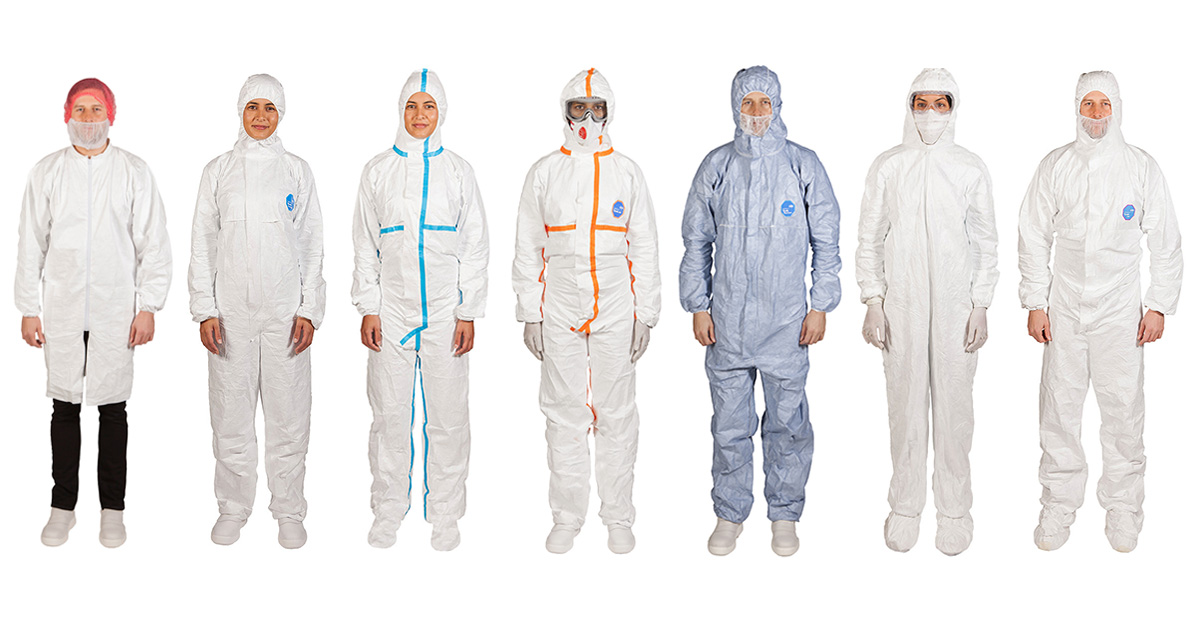What is Category III and Type 5 and 6 PPE?
- By Jeni Thomas
- 19 Apr 2023
 Protective clothing such as DuPont™ coveralls and lab coats, are vital to ensuring safety in many industries, from hazardous waste management to chemical manufacturing. However, with so many options available, knowing which type of protective clothing will offer the level of protection necessary for the specific task can be challenging.
Protective clothing such as DuPont™ coveralls and lab coats, are vital to ensuring safety in many industries, from hazardous waste management to chemical manufacturing. However, with so many options available, knowing which type of protective clothing will offer the level of protection necessary for the specific task can be challenging.
Thankfully, there is a system to help make this decision easier. There are three categories. The categories aren't formally defined, but they are commonly referred to as follows:
- Category I: PPE that offers protection against minimal risks
- Category II: Equipment that does not fall under Category I or III
- Category III: PPE that provides protection against extremely serious risks, such as the risk of death or irreversible health damage
Within Cat III, there are six levels of protection, or "Types," that chemical protective clothing can provide. The equipment must pass one or more Type tests and meet or exceed minimum requirements for physical and chemical properties.
It's important to note that even if products are certified with the same Type, their protection performance levels may differ. This is because the Type tests reveal differences in the products' protective capabilities, and choosing the right Type for the specific task is essential.
What is Type 5 Protective Clothing?
Type 5 outlines the basic standards that chemical protective clothing must meet to resist the penetration of solid particles in the air. These garments offer full-body protection, covering the trunk, arms, and legs. Examples include one-piece coveralls such as the Tyvek® Industry, Dual, Labo, or Xpert coveralls. Type 5B protects against biologically contaminated particles, such as the DuPont™ Tyvek® 600 Plus coverall.
What is Type 6 protective clothing?
Type 6 sets the minimal standards for limited-use and reusable chemical protective clothing that offer only limited protection. Such protective clothing is designed for use when there's a risk of exposure to light sprays, liquid aerosols, or low-pressure, low-volume splashes that don't require a complete barrier to liquid permeation at the molecular level.
This standard applies to both chemical protective suits (Type 6) such as the Tyvek® Industry, Dual, Labo, or Xpert coveralls and partial body protection garments (Type PB [6]). Partial body protection (Type PB [6]) garments, such as labcoats, aprons, oversleeves, and so on, offer limited protection and cover specific body parts. These garments are not subject to the whole-suit test. Type 6B protects against biologically contaminated particles, such as the DuPont™ Tyvek® 600 Plus coverall.
In conclusion, chemical protective clothing is critical to ensuring safety in many industries. By understanding the different Types and their specific capabilities, workers can be better equipped to protect themselves on the job.
Browse the DuPont range of cleanroom garments and industrial PPE.
